The Semenov hydrothermal fields at 13°N along the Mid-Atlantic Ridge (at a latitude similar to that of Senegal and Nicaragua), boasts the world’s largest known seafloor massive sulfide (SMS) deposits with an estimated 100+ million tonnes (Mt) at Semenov-4 alone.
In comparison, scientific literature has quoted the 50-percentile for tonnage of SMS deposits to only 0.05 Mt, AND VMS deposits (onshore, ancient SMS deposits) to 2 Mt. According to estimates by the Norwegian Offshore Directorate, Mohn’s Treasure on the Mohn’s Ridge could hold a bit more than 2 Mt.
However, for SMS exploration in Norwegian waters, it is still early days, with potential for larger discoveries ahead.

Seabed ore factories
Mid-ocean ridges are probably the best places to go if you want to observe recent or even real-time ore-forming processes. Where the oceanic plates separate, boiling, mineral-laden fluids from the depths are allowed to percolate upwards toward the seafloor. As the hot water comes in contact with cold sea water, the minerals are dumped on or just below the seafloor. This process builds chimneys and mounds, highly enriched in a wide range of metals including copper, zinc, cobalt, gold and silver.
Globally, over 600 SMS fields are known; Norway claims about 15, including recent discoveries such as Grøntua and Gygra.
For some years, the project ULTRA team has been mapping and collecting data from the Semenov fields, using tools such as high-resolution seafloor mapping, remotely operated vehicles, seafloor drilling, sediment coring, sub-seafloor imaging by seismic reflection and refraction, and sub-seafloor resistivity surveys using controlled source electromagnetics.
The research offers Norwegian exploration companies a roadmap to chase deposits and get insights on how they form and how metals migrate during weathering.
Slow cooking gives better results
– It’s a bit of a paradox, really, noted Bramley Murton, project leader and professor of Marine Geology at the National Oceanography Centre, during his talk at the Deep Sea Minerals conference in Bergen in April.
Fast-spreading ridges host more hydrothermal vents due to higher heat budgets, while slow-spreading ridges like the Mid-Atlantic or Mohn’s have fewer.
– However, the accumulative volume of known SMS deposits is larger at slow-spreading ridges – 86 per cent in tonnage, he pointed out.
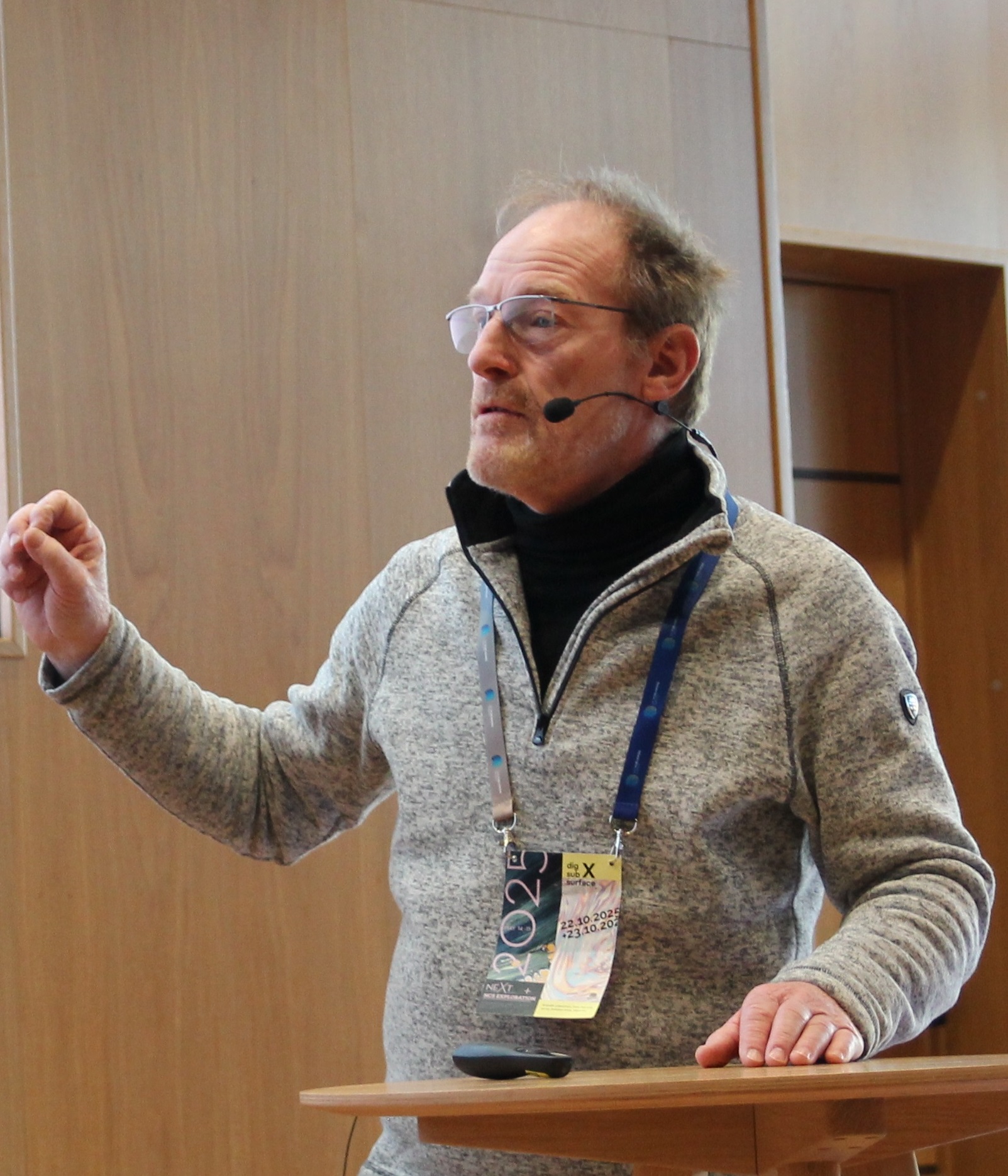
This is, according to Murton, due to the tectonic setting. Slow-spreading ridges are operating like slow cookers – they do their job over a longer time period, allowing for more minerals to accumulate.
These ridges are often dominated by tectonic processes (as opposed to magmatic), such as long-lived detachment faults forming oceanic core complexes (OCCs). The faults can be active for hundreds of thousands of years, and maintain high temperatures and open fluid pathways, enabling continuous hydrothermal circulation.
Murton argued that the research is of relevance to Norway. The tectonic setting found at 13°N along the Mid-Atlantic Ridge, bears similarities to the Norwegian ridges, including the slow spreading rates and presence of oceanic core complexes.
This suggests excellent potential for finding more (and larger) sulfide deposits in the Norwegian Exclusive Economic Zone. Whether they could rival Semenov’s scale, remains to be seen, pending further mapping and exploration activities.
Clues for explorers
Beyond their size, ULTRA explored how these deposits evolve. Christian Star Bishop, a postgraduate researcher at the University of Southampton, shared insights on weathering at the conference. As the deposits age and interact with seawater, their composition changes.
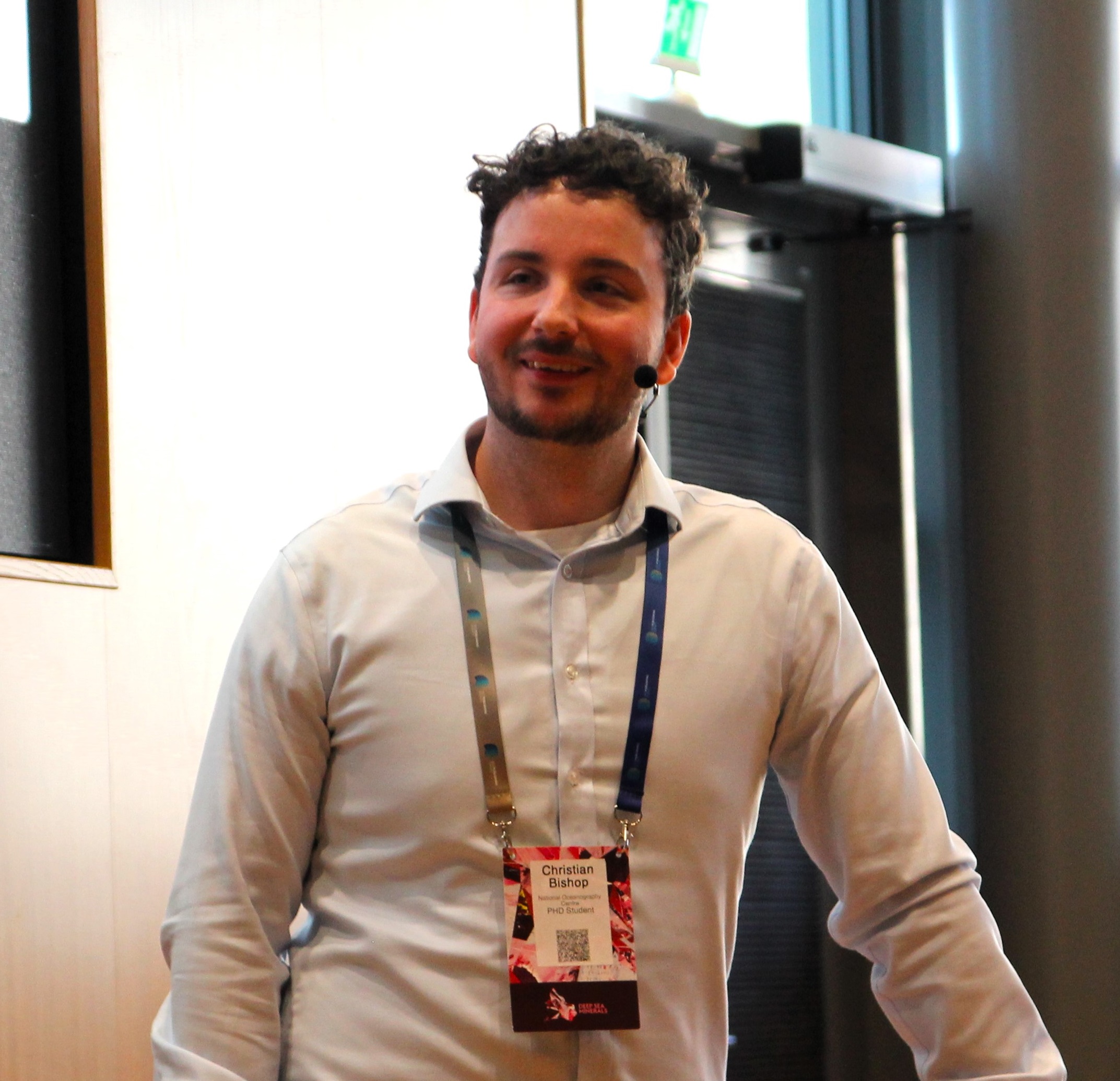
– What is the point of understanding weathering products, Bishop asked rhetorically.
Besides potentially being easier to process, Bishop highlighted two potential benefits during his presentation: they can guide exploration and add value.
A weathered deposit forms a rusty crust of Fe-oxyhydroxide, sometimes laced with bright green atacamite veins. Bishop’s team found atacamite flags copper-rich zones below and within the crust, unlike Fe-oxyhydroxide, which doesn’t reliably signal deeper metals.
Bishop noted that atacamite has been observed along the Mohn’s Ridge at the Grøntua, Fåvne and Gnitahei fields. The Norwegian Offshore Directorate also recently announced that the green mineral was spotted at the Gygra deposit along the Knipovich Ridge.
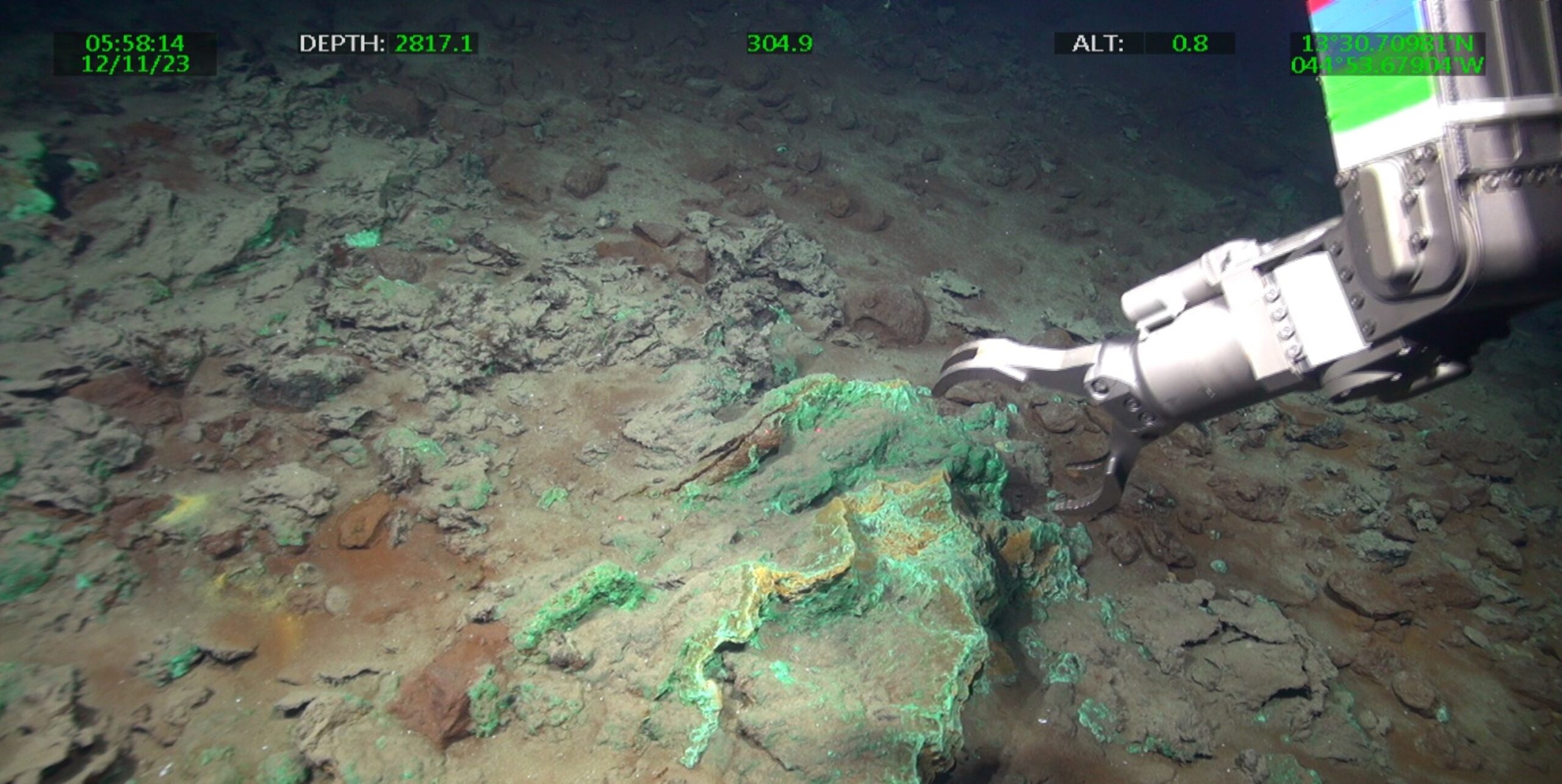
The researcher further noted that that the crusts may generally present the same grades of copper and zinc (at Semenov: 2,55 wt. % combined) that you will typically find in similar deposits on land (VMS deposits). Albeit lower than the grades found within the unweathered sulfide, the crusts could represent economic value.
Additionally, gold and silver may enrich at the iron oxyhydroxide-sulfide boundary, potentially adding further value.
In terms of tonnage, preliminary calculations at Semenov range from 0.1 to 1.0 million tonnes of crust material but could be considerably higher.
Future work will, according to Bishop, include drilling in order to better understand the morphologies and thicknesses of the crusts, and to prove the capability of atacamite as an exploration indicator. The team is also eager to learn more about the fate of gold and silver as sulfide deposits weather.
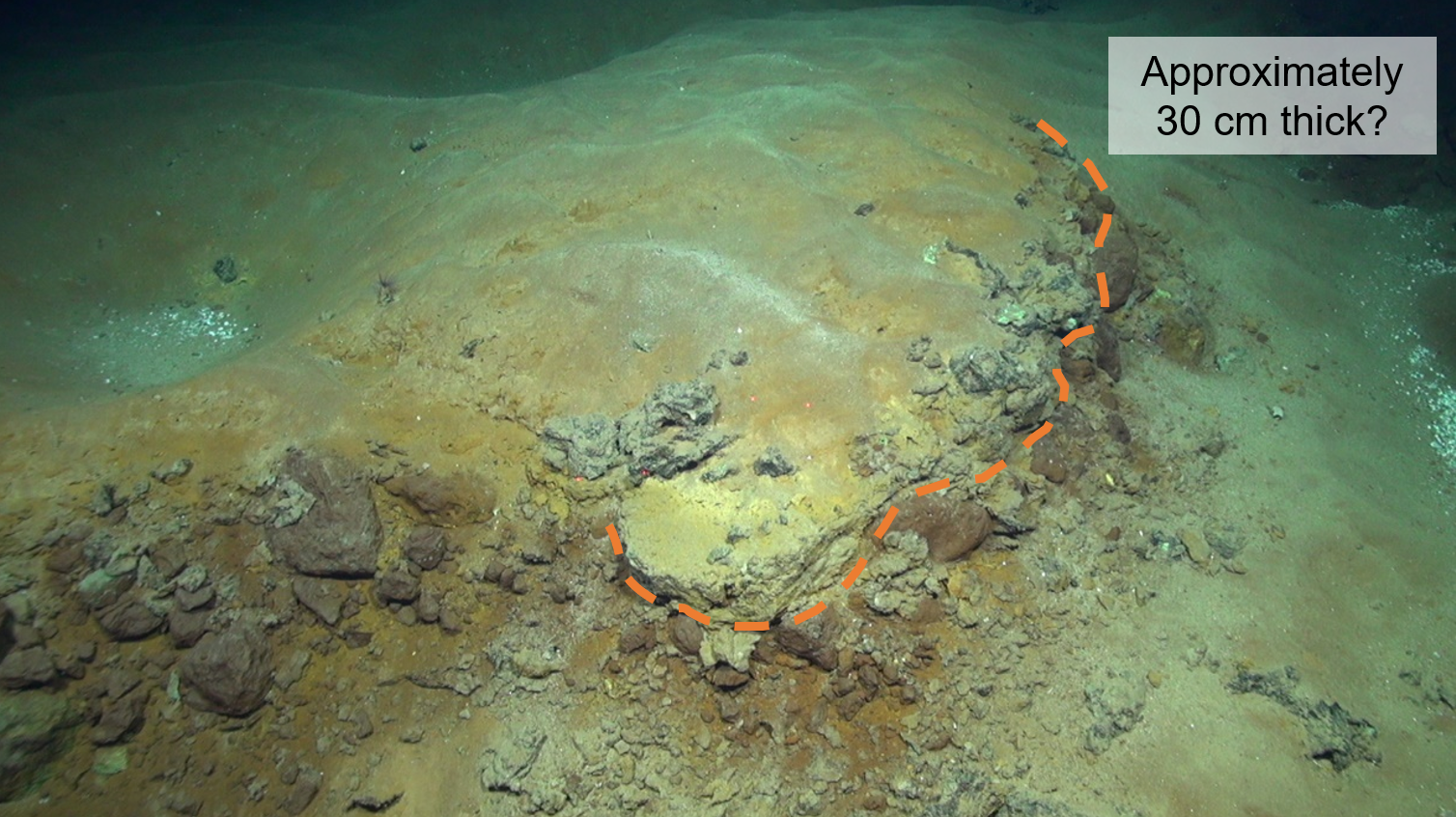
Guided by sediments
There is valuable information to be found in the sediments nearby active and inactive SMS deposits.
– Sediment cores can lead to quicker discoveries, declared Acer Figueroa, PhD student at the University of Southampton.
Figueroa’s take-home message was that sediments influenced by hydrothermal activity incorporate geochemical signals that may be used to vector towards sulfide deposits.
– Sediment coring offers a balance between covering wide areas while also getting physical samples. It is worth to integrate it as an exploration technique for these deposits because it allows us to do rapid geochemical scanning during expeditions.
At Semenov, core analysis revealed three styles of SMS mineralization:
- Inactive SMS mounds that lack hydrothermal input at the surface but display deeper mineral signatures.
- Recently inactive SMS mounds, where hydrothermally influenced sediments decrease in concentration as you move away from the mounds.
- Mineralized fault zones, characterized by metal-enriched sediments that diminish in concentration away from the fault.
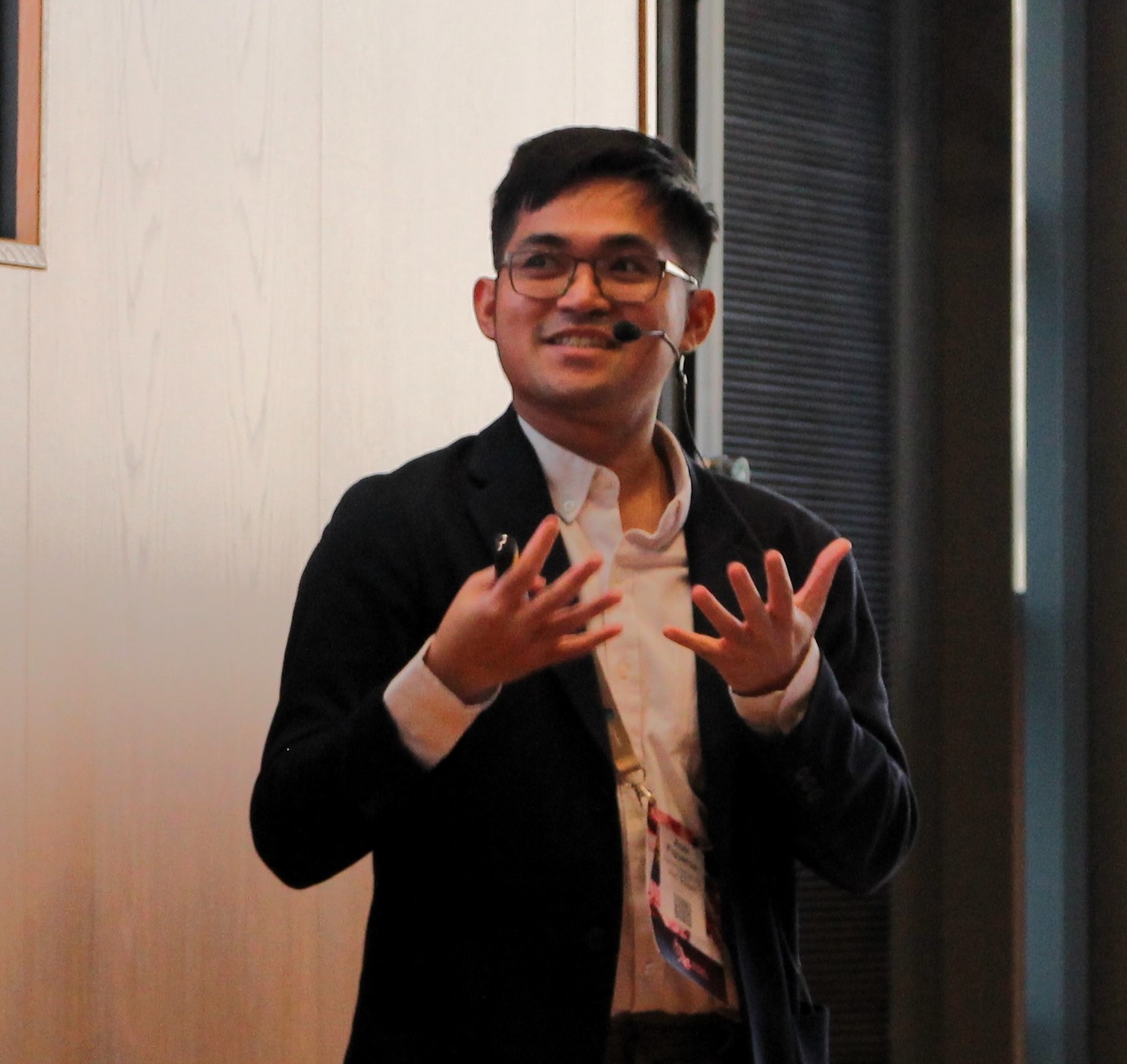
The two main mechanisms that generate metalliferous sediments are plume fallout and mass wasting. Both processes create spatial geochemical variations that could serve as indicators for locating SMS sites.
According to Figueroa, metal enrichments in sediments were detected up to 1 km away from the recently inactive mounds, and at least 200 meters from the fault zones. Recently inactive vents may be reflected in geochemical signatures in the sediments at the seafloor, while signatures originating from older deposits will be buried deeper.
He also highlighted a previously undescribed black layer, 35-centimeter thick, heavily enriched in the copper mineral bornite, with concentrations reaching 60 wt. % copper. This could represent a new exploration marker and serve as a co-product for sulfide mining.
Advancing essential knowledge and preparedness
The ULTRA project’s findings provide a blueprint for Norway’s exploration ambitions, given the similarities between Semenov’s slow-spreading setting and Norway’s ridges.
With about 15 known SMS fields and mapping efforts being accelerated in 2025, Norway is well-positioned to leverage these insights. Several Norwegian participants, including the University of Bergen, Equinor, and Green Minerals, are part of the project, alongside the National Oceanography Centre, the British Geological Survey, the universities of Cardiff, Southampton, Leeds, and the Memorial University (Canada), as well as GEOMAR (Germany).
The ULTRA project has significantly advanced our understanding of SMS deposits, offering practical exploration strategies. Though Norway’s first licencing round hit a delay, ongoing scientific work is crucial to advance essential knowledge and preparedness for future activities.

![window.adn = window.adn || {};
adn.calls = adn.calls || [];
adn.calls.push(function() {
adn.request({
network: "2cddc6",
adUnits: [{
auId: "2e0bfb",
auW: 1230,
auH: 480
}]
});
});
A blueprint for Norwegian sulfide exploration](https://geo365.no/wp-content/uploads/2025/04/Semenov-4-mounds-1024x575.png)